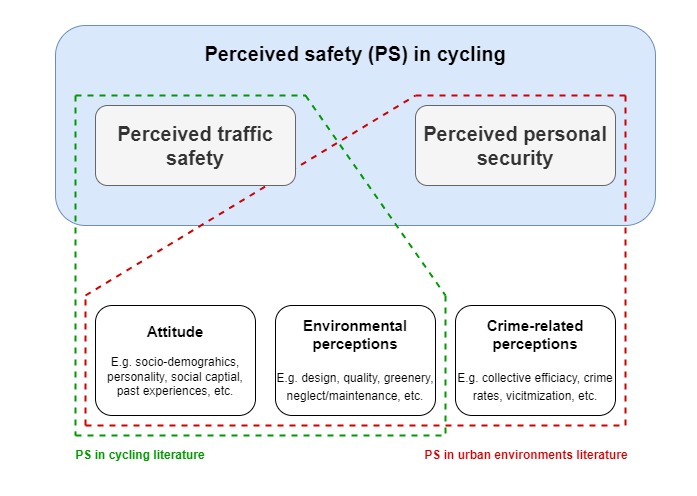In the dynamic landscape of urban cycling, safety stands as a paramount concern. Over the last 6 months, Work package 2 has delved into the layers of perceived safety to enhance the cycling experience for all.
From an initial exploration of literature, it quickly became clear that perceived safety in cycling consists of two main components: experienced traffic safety and perceived personal security. The latter of these components is relatively unexplored in academic literature within the cycling context.
Building upon this insight, a systematic review of academic literature was conducted to investigate perceived traffic safety in cycling, utilizing the PRISMA statement. This review resulted in a longlist of factors influencing the perceived safety of cyclists. Additionally, prominent environmental theories on personal security in urban areas, as well as psychological frameworks behind perceived safety, were explored to further expand this list of factors. Drawing upon knowledge derived from Dutch practice, this longlist was refined to a set of 19 urban design-related attributes. These attributes are currently being translated into virtual environments for use in a cycling simulator experiment and a survey-based stated choice experiment, scheduled for execution in the upcoming months.
In late February, a workpackage kickoff meeting was hosted for project partners involved in cycling safety. During this meeting, detailed progress discussions took place, and opportunities for partner involvement in the research were explored. The meeting yielded numerous new research ideas and opportunities for collaboration.
